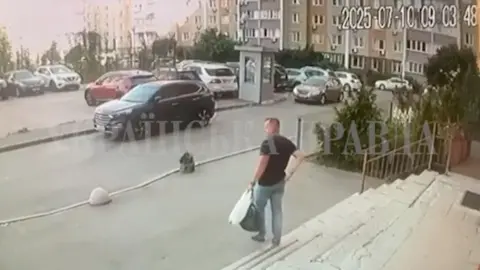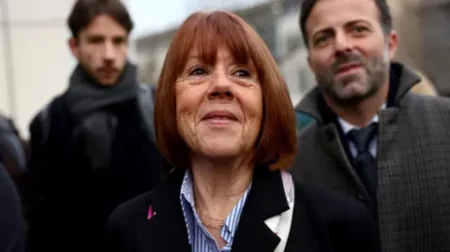In a significant escalation of tensions between Ukraine and Russia, Ukrainian authorities announced the death of two Russian agents following the assassination of a senior Ukrainian intelligence officer, Colonel Ivan Voronych. This incident marks another chapter in the ongoing conflict that has plagued Ukraine since Russia’s full-scale invasion in 2022.
Colonel Voronych was shot multiple times in broad daylight at a car park in Kyiv on July 10. He was approached by an unknown assailant who subsequently fled the scene. The Ukrainian Security Service (SBU) has taken a proactive stance in responding to this assassination, highlighting the ferocity and urgency of the ongoing conflict. Vasyl Malyuk, the head of the SBU, confirmed in a video statement that the two agents, who were reportedly working for Russia’s FSB, were located and “liquidated” after they resisted capture on Sunday morning.
The details surrounding Voronych’s assassination have sent shockwaves throughout Ukraine, with CCTV footage later released showing the chilling moment just before the attack. The video captures a man exiting a building in the Holosiivskyi district of Kyiv, right before the assailant approached him. Reports further indicate that the suspects had been tracking Voronych and were armed with a silencer-equipped pistol, which underscores the calculated nature of the assassination.
In the aftermath of the incident, Ukraine’s national police described the two agents killed as “citizens of a foreign country,” but did not provide specifics on their nationalities. Moscow’s response was immediate but vague, lacking substantial detail in relation to the assassination of one of its agents. This lack of clarity indicates a possible embarrassment or sensitivity surrounding Russia’s covert operations in Ukraine.
The SBU, which is akin to the UK’s MI5, focuses on internal security and counter-intelligence but has gained prominence in executing operations that have included sabotage and assassinations deep within Russian territory. Their involvement in the assassination of high-profile Russian military officials, such as General Igor Kirillov in December of the preceding year, further exemplifies the shifting dynamics and heightened stakes of this conflict.
This recent uptick in violence follows a significant increase in Russian airstrikes targeting Ukraine. Ukrainian President Volodymyr Zelensky reported that the country faced its largest aerial assault from Russia in history just days after Voronych’s death. June’s confirmed casualties marked the highest civilian toll in three years according to United Nations reports, demonstrating the intensifying nature of the conflict.
As the fighting continues, with Russian forces making incremental territorial gains in eastern Ukraine, efforts toward a ceasefire seem increasingly stymied. On the battlefield, Moscow’s troops have retaken significant areas in regions previously captured by Ukrainian forces during a surprise offensive last summer. This reality poses a mounting challenge to Ukraine as it strives to navigate and respond to ongoing military pressures while safeguarding its national interests.
The direct result of these recent developments illustrates an unprecedented fraught interaction between Russian operatives and Ukrainian security forces. This cat-and-mouse dynamic not only enhances the volatile atmosphere but raises concerns about the potential for further escalatory actions by both sides amid a war that has already led to significant loss and destruction.
In summary, the recent killing of Ukrainian intelligence officer Ivan Voronych and the subsequent execution of two Russian agents illustrates the dire state of Ukraine-Russia relations, exacerbated by record levels of violence and repeated human suffering. The repercussions of these actions will likely resonate deeply within the theaters of conflict and beyond, as both nations grapple with the implications of their escalating confrontation.











